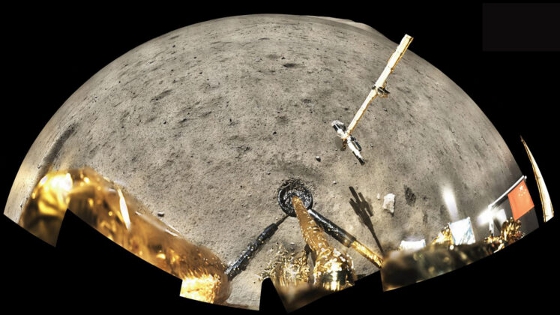 |
| October 12, 2021 | Volume 17 Issue 38 |
Designfax weekly eMagazine
Archives
Partners
Manufacturing Center
Product Spotlight
Modern Applications News
Metalworking Ideas For
Today's Job Shops
Tooling and Production
Strategies for large
metalworking plants
Weird Science: New Moon rocks are one billion years younger than any others brought back to Earth
Researchers at Curtin University in Australia have helped to determine the age of the youngest rocks ever found on the Moon as part of a global space mission that is working to refine the chronology of the entire Solar System.
The new research, published in Science, determined the basaltic volcanic rocks, collected as part of China's Chang'e-5 Moon landing in December 2020, were about two billion years old -- or one billion years younger than those previously found on the Moon.
The rock samples were collected by the Chinese National Space Agency during the Chang'e-5 mission, which marked the first time any nation had collected rocks from the Moon since 1976.

China's Chang'e-5 Moon landing in December 2020. [Source: Chinese National Space Agency Lunar Exploration and Space Engineering Center]
Lead Australian author Professor Alexander Nemchin, from Curtin University's Space Science and Technology Center in the School of Earth and Planetary Sciences, said researchers determined the age of the lunar rock samples during remote sessions with the Beijing laboratory using large mass spectrometers that have helped revolutionize geology, similar to Curtin's Sensitive High Resolution Ion Micro Probe Facility (SHRIMP).
"Previously, the youngest lunar basalt rocks collected as part of the Apollo and Luna missions, as well as lunar meteorites, were found to be older than about three billion years," Professor Nemchin said.
"After analyzing the chemistry of the new Moon rocks collected as part of China's recent mission, we determined the new samples were about two billion years old, making them the youngest volcanic rocks identified on the Moon so far.
"This discovery puts Australia at the heart of efforts to internationalize scientific collaboration around China's lunar exploration program, including samples returned from China's Chang'e-5 mission and the upcoming Chang'e-6 Moon landing in 2024."
Co-author Professor Gretchen Benedix, also from Curtin's Space Science and Technology Center, said the new results would provide researchers with more calibration points for cratering chronology, enabling them to derive more accurate and higher resolution ages across many planetary surfaces.
"These results confirm what experts had long predicted based on remotely obtained images of the Moon and raise further questions as to why these young basalts exist," Benedix said.
"The task will now turn to finding a mechanism that will explain how this relatively recent heating of the Moon may have supported the formation of basaltic magmas with temperatures exceeding 1,000 C -- and ultimately help researchers improve age dating of the entire Solar System."
Professor Fred Jourdan from Curtin's School of Earth and Planetary Sciences was also a co-author of this paper.
The research was carried out in collaboration with experts from the International Lunar and Planetary Research Center of China, The Beijing SHRIMP Center, The Australian National University, Washington University in St Louis, Notre Dame University and Brown University in the United States of America, the University of Colorado, Manchester University in the United Kingdom, and the Natural History Museum in Sweden.
Source: Curtin University
Published October 2021
Rate this article
View our terms of use and privacy policy
